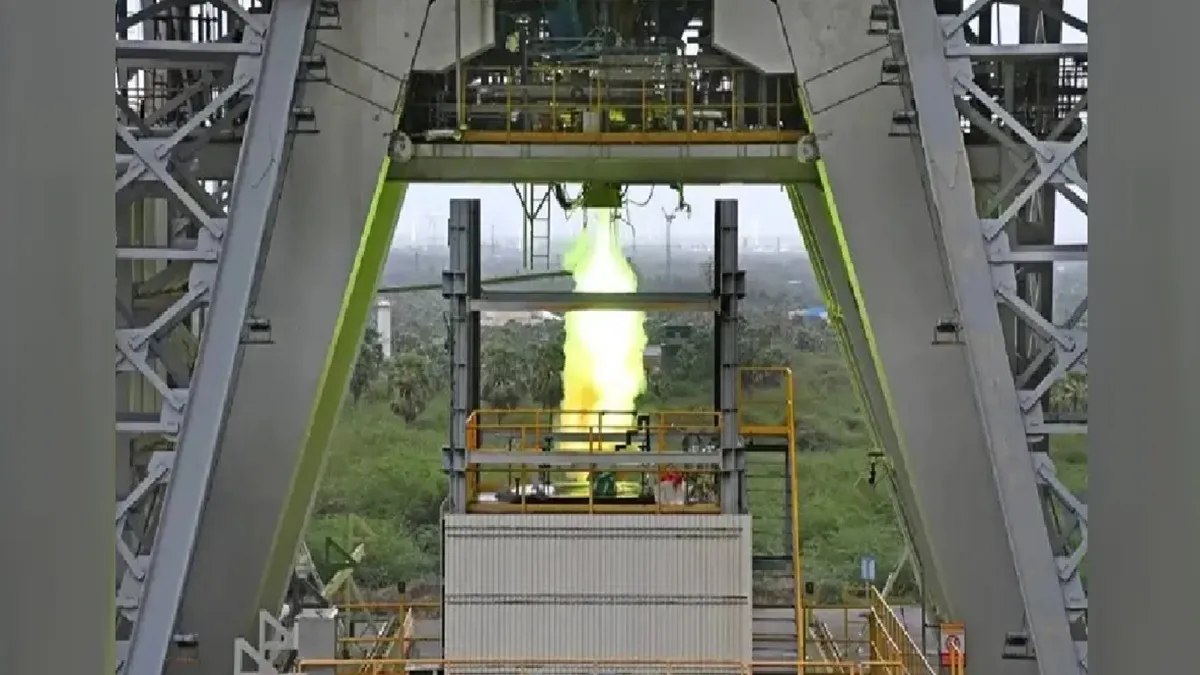- By Raju Kumar
- Tue, 03 Jun 2025 07:32 AM (IST)
- Source:JND
ISRO's Semicryogenic Engine: ISRO, the Indian Space Research Organisation, on Monday said it carried out the third hot test of the Power Head Test Article (PHTA) at the ISRO Propulsion Complex in Mahendragiri, Tamil Nadu. The space science body achieved a significant milestone with the successful completion of the third trial in a series of hot tests undertaken by ISRO for the PHTA.
During the three-second trial, the engine was ignited successfully and operated up to 60 per cent of its rated power level, exhibiting stable and controlled performance throughout.
Why Is The Power Head Test Article Crucial?
The test is part of a crucial series of evaluations to validate the performance of India's upcoming semicryogenic engine, ISRO said.
The Semi-Cryogenic Propulsion Stage (SC120), powered by the 2000 kN-class SE2000 engine, is being developed to replace the current liquid core stage (L110) of the LVM3 launch vehicle towards enhancing its payload capability. The L110 of the LVM3 launch vehicle is a crucial component that provides the main thrust needed for the vehicle's ascent. It's a liquid propulsion stage, featuring twin Vikas engines designed by Liquid Propulsion Systems Centre (LPSC).
ALSO READ: Caught On Video: Rs 35 Lakh Robbery In Chandni Chowk, Traders Held At Gunpoint | Watch
According to ISRO, the test, conducted on May 28, was aimed at validating the engine's ignition and start-up sequence while optimising the process for integrated engine performance.
ALSO READ: UMEED Portal To Be Launched For Registration Of Waqf Properties On June 6: Reports
ISRO began this series of performance evaluations in March 2025, focusing on critical components such as low- and high-pressure turbo-pumps, the pre-burner, start-up system, and various control mechanisms.
The first test, conducted on March 28, 2025, confirmed smooth ignition and bootstrap operation during a 2.5-second run.
The second test, carried out on April 24, focused on the start transient build-up and validated the ignition sequence over a 3.5-second duration.
(With PTI inputs)

